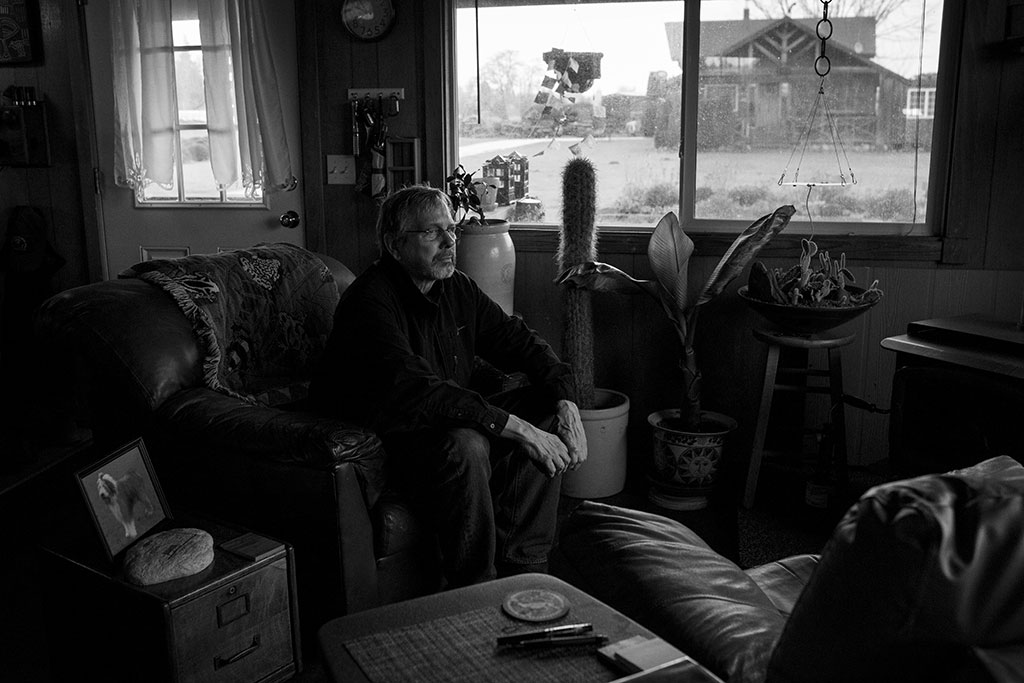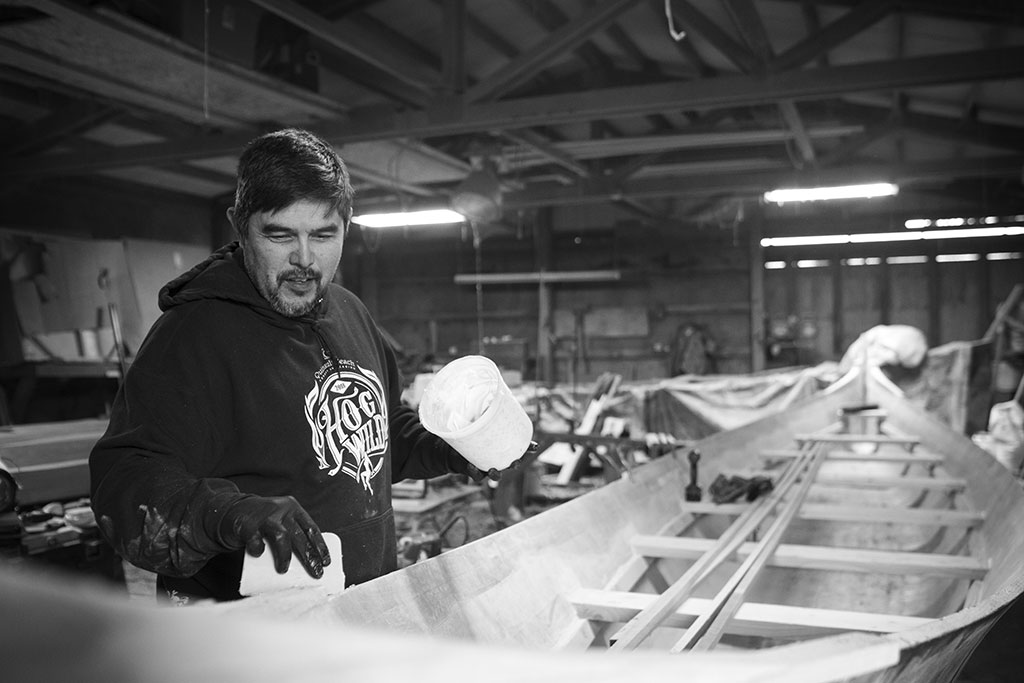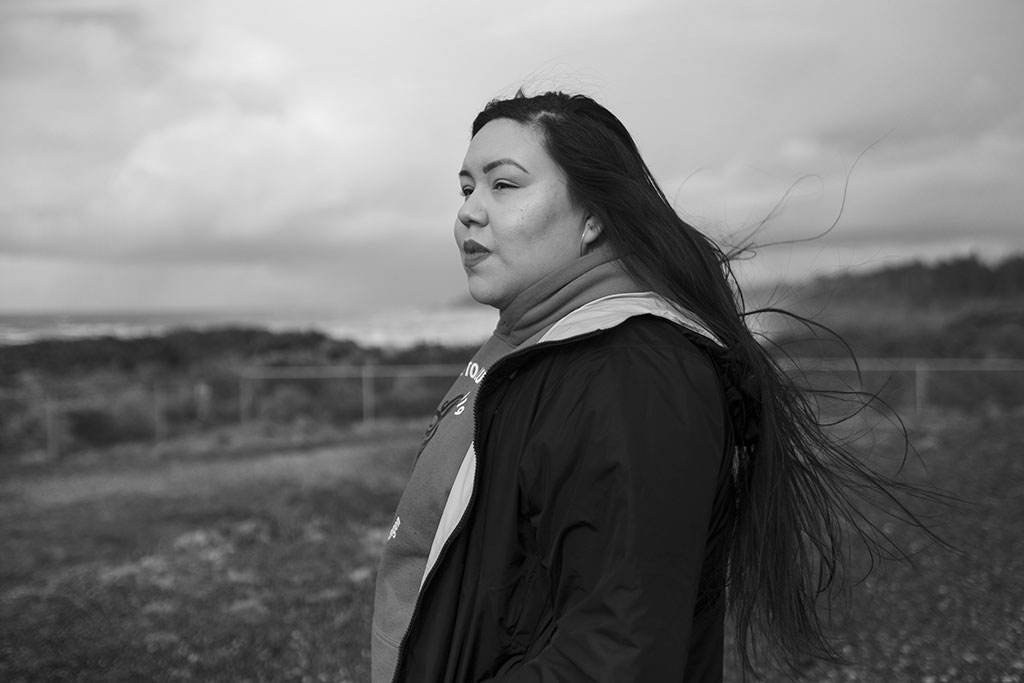A version of this story appeared in the summer 2020 issue of Uncommon Path.
Ninety-three miles west of Seattle, Point Haynisisoos juts out from Washington’s coastline to greet the roaring waves of the Pacific Ocean. The view bears all the hallmarks of the Olympic National Park beaches to the north: Churning surf foams at the base of 120-foot-tall cliffs; sea stacks stud the horizon. To the north and the south below the bluffs, gray-sand beaches splay out in wide arcs, each dotted with anemone-filled tide pools and spitting razor clams.
But most of the three-million-plus annual visitors to the Olympic Peninsula never see Haynisisoos. The point isn’t part of the peninsula’s namesake national park, or even the United States. It never has been: This 23-mile stretch of coast belongs to the Quinault Indian Nation, and they have been fishing, harvesting clams, launching canoes and inhabiting the region for thousands of years, since long before sailors tried and failed to claim it for Spain in 1775.

The view of the ocean from Point Haynisisoos, where the sea has slowly eroded the cliff.
Fawn Sharp grew up visiting Haynisisoos. On weekends back from Gonzaga University or law school at the University of Washington or a stint in the CIA in Washington, D.C., she would return to scale one particular outcrop, hoping to bottle the “peace and solace” found only in the sacred places of her homeland.
“I would climb as a kid way up into the rocks and climb down on the other side, and just be away from seeing anything or anyone—it was a stunning and beautiful place,” she says. “I still go back. But it’s barely a mound now.”
In her 49 years, Sharp has watched the sea gnaw at Haynisisoos. She has also seen it claw its way into the Quinault’s two main villages of Taholah and Queets, officially 7 feet and 30 feet above the rising sea, respectively. Winter floods regularly breach a nearly 1,000-foot-long seawall of black boulders that was rebuilt by the U.S. Army Corps of Engineers in 2014 to protect Taholah. Storm surges send 3-foot ocean rollers up the Queets River, once tossing fishing elders out of their boats into the branches of willow trees overhanging the banks.
If this is the Quinault Nation’s alarming present, the future promises catastrophe. Temperatures in Washington are expected to increase by 3°F to 10°F by the end of the century; as they do, seas will rise near Taholah and Queets most likely by 1 to 3 feet, possibly as much as 8 feet. That range is dependent on a web of variable climatic factors—some of them beyond human purview, but much of them to be determined by how much carbon we release into the atmosphere.
Queets and Taholah exist on the upper end of the scale for potential damage from sea level rise along the Washington coast, exposing them disproportionately to the increasingly frequent and intense storms that those rising temperatures will bring. The Quinault have endured storms in this very place for centuries, but never like the ones that may come.
Climate change can feel like a slow-motion disaster movie, always humming in the background and threatening someone else far away. Its brand of apocalypse creeps in at the edges like an annoyance: Smoky skies invade our late-summer trail views; we read headlines about disappearing South Pacific islands and conclude we should eat less meat. But thanks to the grinding tectonic plates 80 miles offshore known as the Cascadia subduction zone, the crisis here is compounded by a technically unrelated but exacerbating threat: A tsunami could wipe Taholah and Queets from the map in an afternoon.
The last major Cascadia subduction-zone earthquake and subsequent tsunami hit the Washington coast on Jan. 26, 1700, at 9pm. Another should happen 300 to 600 years later—geologically speaking, any day now. Even moderate sea level rise of a foot can extend how far a wave—perhaps one as tall as 40 feet, perhaps taller—might push inland, how many homes or buildings or artifacts it might sweep away. Erosion from higher seas also diminishes natural barriers: For Queets, that has reshaped its formerly braided river into a straight one, offering any incoming tsunami a direct shot into town.
As devastating as watching a rising sea erase an entire cultural geography might be, Sharp has her eye on saving lives. To do that, the fifth-term president of the Quinault Indian Nation hopes to move two villages and nearly a thousand souls uphill to safety, away from the fishing grounds where they’ve always lived. In a country where few can claim roots going back more than a generation or two, the Quinault tie themselves to an unbroken line of culture and oral tradition rooted to these clay banks and stony beaches since time immemorial.
Sharp and her administration are at the start of a community-wide effort to shepherd the Quinault to higher ground. Though they will bring their history and tradition with them, they must also reckon with what being Quinault means when home is no longer by the sea.
Every so often, Charles Warsinske, 71, watches tsunami footage on YouTube to remember the details: how the maelstrom of gray water and debris tosses boats into highways as if they were toys, how it sweeps two-story houses away like ink wiped from a dry-erase board. “Just last night I was looking at the Japan tsunami [near] Sendai—I do that every once in a while to remind me we gotta get urgent about this,” says Warsinske, a former community planning and development manager for the Quinault Nation. “You can say that’s not going to happen for 50 years, but if you’re in this community and you look at these kids—these families—we can’t let these babies perish in that way. How can we get them out of here and up on the hill and figure this thing out?”

Charles Warsinske, a former community planning and development manager for the Quinault Indian Nation, pictured at home.
Taholah has a running start. A new, earthquake-resilient townsite more than 120 feet above sea level has been selected, and framing has begun on the $15 million, 30,000-square-foot Generations Building, which will host elder programs and Head Start programs for young children to safeguard the most vulnerable populations first. The entire relocation effort could cost upward of $150 million. Sharp and Warsinske hope to build a 60-lot neighborhood and a renewable energy park within the next three years. Police and fire stations, 300 additional neighborhood lots, helipads and more will come after—depending on funding, which is slowly being cobbled together from internal sources, as well as federal and state grants and loans. Queets has identified a space for an upper village and plans to break ground later this year on its own Generations Building—a 10,000-square-foot edifice that will cost around $4.5 million.
“This is the Quinault homeland, this is where they are, and they can’t move—we’ve gotta make it as safe as we possibly can,” Warsinske says.
First Person: Guy Capoeman
Canoe Carver, Artist and Educator
“I firmly believe that in order for somebody to be a Quinault and to be any representation of any tribe, you have to be familiar with the land that your ancestors lived on—familiar in the sense that you go hunting, you go fishing, you go gathering, you dig clams, you fish in the ocean. Those sorts of things, I think, are really key to how you view the universe. Nowadays, you go to drum group and there’s probably 40 songs that are sung, and that’s just a part of it. It’s younger people that are coming up with all of this stuff, and they’re carrying on all these cultural ways. Us older guys, we kind of move to the back and just help them out.”
After decades of atrophy, Quinault art and culture experienced a renaissance in the ’80s and ’90s. The community began speaking their language at home and at school, and artist Guy Capoeman, 51, carved the first oceangoing canoe in a hundred years in 1994. His large-format murals cover buildings in nearby Aberdeen, Washington, and he’s helped usher in a new generation of makers who show paddles in galleries and dream of building longhouses, which haven’t existed in the nation in almost a century.

Guy Capoeman, artist and canoe builder, works on a canoe in Taholah, one of two villages that must be relocated to higher ground as a result of sea level rise.
Leilani Chubby, 70, runs the Quinault Cultural Center. It’s a modest blue-gray building on the edge of the lower Taholah village. Over the years, she’s amassed a collection of artifacts—drums, paddles, masks, baskets, photographs—chronicling Quinault history. “They’re not just to look at—they were used,” she says. “So it’s important. If we ever had a tsunami, this would all get wiped out. We need to move it up the village into a safer land.”
Not everyone feels the same fear. Howling storms and floods come to Quinault shores every year, and the scale of a tsunami can be hard to imagine.
“The elders have actually been pretty stubborn about it—we’ve had a few people down there that said that they’re not going to move no matter what,” says Thomas Obi, a Quinault council member from Queets.
Shavaughna Underwood, 24, shows up at Taholah’s Heritage Park on a rare sunny December morning wearing a T-shirt that says “Careful. I’m Rez.” In addition to working toward a degree in Indigenous and social studies at Evergreen State College in Olympia, Washington, she’s the administrative assistant for the nation’s behavioral-health program, vice president of the Cultural Committee and secretary of the Quinault Canoe Society. But she introduces herself as a fisherman’s daughter.
First Person: Shavaughna Underwood
Social Worker, Cultural Advocate
“I think we need to go back to how our ancestors were and be more assertive, instead of acting like we need anyone’s permission to protect the environment. We need to give the land back to the Indigenous people. When I say that, it’s not the colonial way of owning things. The land doesn’t belong to anyone—we were put here to take care of it. I don’t really like to romanticize leaders—I like to question them. I see tribal nations taking these issues seriously—as they should—but they’re not starting at home. I want to see something like a plastic ban within the reservation. We need to show everyone we’re living this lifestyle, and you should be too. But right now, we’re not.”
Underwood says she’s related to “half the nation.” They tell her stories of how they used to walk from Taholah to Queets, on a beach the sea has long since reclaimed. Despite this, many of them—including her father and grandfather—refuse to leave the tsunami danger zone for higher ground at the new townsite. When French journalists bearing gifts came knocking on their door in 2018 to ask if they planned to relocate, her father answered with a terse “No” and shut the door. Underwood apologized and took the gifts.

Shavaughna Underwood is a student, administrative assistant for the nation’s behavioral health program and vice president of the Cultural Committee.
“My great-grandfather told me that it’s never going to happen in my lifetime—but that doesn’t mean it’s not going to happen,” Underwood says. “I think the natural disaster won’t happen in my lifetime. But it’s our responsibility to take care of that before it happens.”
The Quinault is a nation blessed with storytellers. Stand around long enough and a stranger will approach bearing a twisty tale or a lengthy diatribe about the Seattle Seahawks’ current shortcomings. In his cedar-dusted canoe workshop, Capoeman unspools the Quinault creation story. His avuncular boom of a voice ricochets off the dark walls and sneaks out the door, beckoning visitors.
“Our people are here for a reason and we stayed here for a reason—because of its riches,” he says. “That threat of climate change—the wave, whatever you want to call it—I think it’s a real thing. … And what it does to this place, I really don’t know. I don’t think anybody can predict that. Leaving this place, where my ancestors have lived for thousands and thousands of years since the beginning of time, is a hard thing to swallow.”
Stabbing into the open northern Pacific Ocean like the large fixed finger of a crab claw, the Olympic Peninsula is surrounded by water on three sides. Its almost 8,000-foot peaks harvest 150 or more inches of precipitation a year, which helps sustain crevassed glaciers, hushed rain forests filled with exceptionally tall conifers and massive blue-gray rivers that uncoil through the forest back to the sea.
All of this offers a unique lens to understand how climate change plays upon interwoven ecosystems: As an acidifying sea rises to meet the Quinault’s villages, so too do the peninsula’s glaciers melt, forests burn and salmon disappear. You’d have to canvas an entire continent to find a similar range and density of climate challenges in such a small area.
On the shore of Lake Quinault stands a tall cedar with a tangled, exposed root system that Sharp says forms a “perfect lounge chair” and a canopy large enough to block the rain. She visits the seat when faced with particularly difficult decisions. The salmon don’t jump the way they did when she was a child, but she says she still feels the power underneath the lake’s surface.
“It’s really sad to be in a place that was rich with abundance—our salmon, our beauty—and to know all that is dying,” Sharp says. “That’s sad, but it’s inspiring and motivating. I’ve come to learn that while we go through very painful experiences—racism, genocide, past, present, probably future—we can’t forget there’s real strength in pain. Some of my strongest moments are when I’ve felt the most suffering or pain.”
In October 2019, voters elected Sharp as president of the National Congress of American Indians, an umbrella organization that speaks for Indigenous communities across the country. In her dual role, Sharp attended COP 25 (the U.N. Climate Change Conference) in Madrid the following December. At an event mostly marked by failure and gridlock, Sharp and other leaders petitioned delegates to protect human rights in Indigenous communities. Her 15-year-old son spoke as part of the Indigenous youth delegation.
“While it’s up to us to develop the strategy, it’s going to be the 15-year-olds today who will implement much of the work that we’re doing—they need to be there,” Sharp says. “They are taking to the streets. They are holding adults accountable. They are aggressively in the face of those who are denying climate change.” The message Sharp passes on to young members of the Quinault community is also one for the outer world: If climate change is the wolf at the door, Indigenous people everywhere are finding ways to keep it at bay.
First Person: Leilani Chubby
Quinault Cultural Center Curator in Taholah, Washington
“I grew up knowing a lot of the elders and I spoke the language, so my sister and I would go visit them. A lot of the elders talked Quinault in those days. Each elder had their different thing. [A woman elder] would greet us, and we’d go in the house, just walk in the door. And she’d start singing her Shaker songs, and she’d get out her drum and start singing Indian songs. There was a time when I was growing up when we weren’t passing on our culture. We weren’t dancing; they weren’t teaching us the weaving. And I’m not sure why, but it was like [Quinault culture] stood still for a while. Then it came back, and it’s been going strong—learning how to carve the canoe paddles, the basket weaving —and they have dancing and singing all the time.”
Underwood, the fisherman’s daughter, is part of the next generation leading the charge to ensure the Quinault survive and thrive in the new villages as they did in the old. To that end, she’s spearheading an effort with other Quinault youth leaders to build a traditional longhouse in the upper Taholah village. The longhouse was once the central gathering place for the Quinault, where bands gathered in celebration or tribulation under gabled cedar roofs.
“A longhouse is just a home. Weddings, potlatches—it’s open to anyone who wants to practice their culture,” Underwood says. “I’ve started touring longhouses on the coast of Washington, asking them, ‘What did you do, how did you bring this to your people?’—that’s my dream.”
Whereas Sharp’s agency comes from stepping out on the public stage, Underwood favors the soft power that carries currency within her community, that strengthens neighborly bonds in the face of unimaginable challenges.
“I like being the underground person—I like being someone who can offer kind energy,” she says. “I’m letting everyone know this belongs to you; no one can take it from you. So whenever you are ready or comfortable, we are here, and we always will be.”
All photos by Sarah Hoffman; additional reporting by Sarah Hoffman


